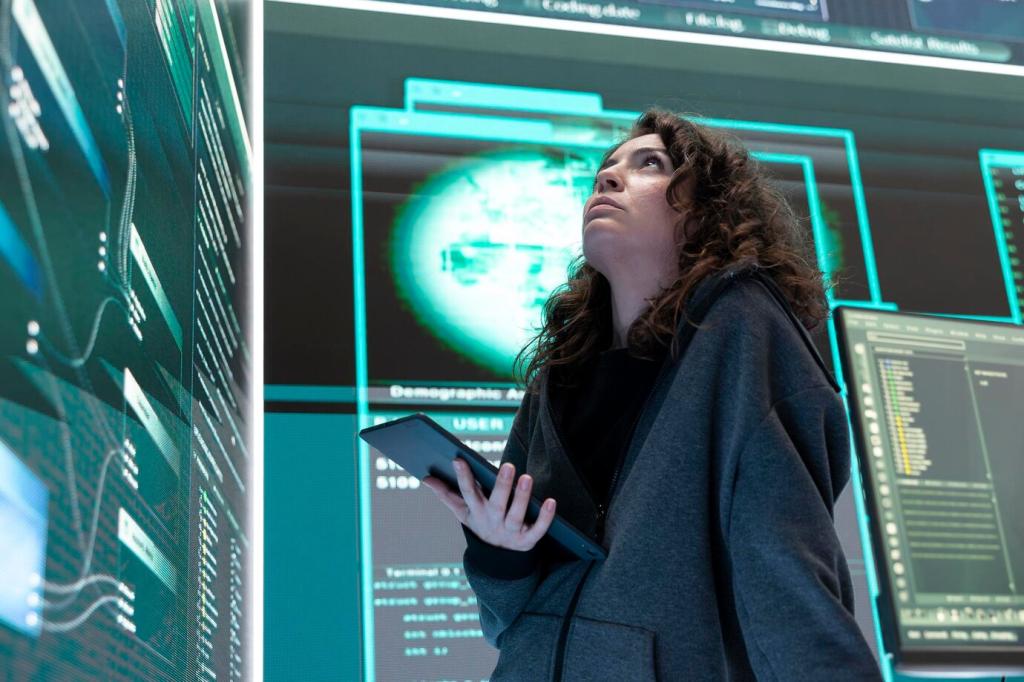Virtual Reality Fashion Shows
The Evolution of Fashion Shows
From Runway to Digital
The fashion industry’s shift from classic, in-person runway exhibitions to digitally streamed events has been both gradual and revolutionary. Initially, only select guests witnessed fashion week in person, while the majority could only access post-event coverage through media. With the proliferation of high-speed internet and social media, designers began sharing live streams, expanding their audience exponentially. However, even with digital access, the experience remained passive. The introduction of VR marked a new era where participation became immersive, enveloping viewers in the ambiance, music, and visuals as though they were physically present in the front row—transcending the passive limitations of prior digital formats.
The Role of Technology
Technology acts as the backbone of virtual reality fashion shows, combining elements such as high-resolution 3D modeling, real-time rendering, and motion tracking to create realistic simulations of garments, models, and environments. Advanced VR platforms enable designers to manipulate virtual fabrics, test lighting, and set the mood with unparalleled precision. Audiences equipped with VR devices can navigate digital spaces, interact with other attendees, and view collections from multiple perspectives. This technological leap does not merely replicate physical fashion shows but introduces new dimensions—such as interactive environments and fantastical set designs—that could not exist in reality. It also opens possibilities for accessibility features, including captions, translations, and customizable views, enhancing engagement for a diverse audience.
Breaking Barriers of Accessibility
Virtual reality fashion shows are democratizing an industry once limited to insiders and celebrities. Traditional fashion weeks often involved travel, steep ticket prices, and exclusive invitations, effectively shutting out the majority of fashion enthusiasts. VR obliterates these divisions by allowing anyone with compatible hardware or even a basic computer to witness the spectacle. Moreover, the immersive experience is not bound by location or time zones—fans from around the globe can participate simultaneously, engaging with the show as if they were in Paris, Milan, or New York. In this way, VR fashion shows are fostering a more inclusive, diverse, and accessible community for brands and audiences alike.
Immersive Experiences Redefining Fashion
Creative Freedom for Designers
Virtual platforms give designers an expansive canvas for their creative vision, unconstrained by the laws of physics or real-world budgets. Garments can shimmer with impossible materials, runways can float among the clouds or submerge beneath the sea, and models can defy gravity. This freedom redefines what a fashion show can be—from surreal, cinematic narratives to interactive storytelling, enabling designers to communicate deeper artistic messages. As a result, brands can differentiate themselves through not only what their models wear, but also through the thematic journeys they create for their virtual guests.

Expanding Audience Reach
Virtual reality extends a brand’s global reach, enabling simultaneous access to audiences in different time zones, geographies, and cultures. Instead of being limited to a prestigious hall in a fashion capital, a VR show can attract thousands—or even millions—of viewers across continents. Brands can engage with younger, tech-savvy demographics while also reaching fashion enthusiasts who would never have attended traditional runways. This increased exposure can drive brand awareness, loyalty, and influence on an unprecedented scale, all while collecting valuable data about viewer preferences and engagement to inform future strategies.
New Revenue Streams
Virtual reality fashion shows introduce a range of potential revenue sources. Brands can charge for premium access, offer exclusive virtual seats, or sell digital merchandise such as limited-edition avatars or NFTs based on their designs. Virtual showrooms and boutiques integrated within the experience let viewers purchase physical or digital versions of looks straight from the runway. Partnerships with tech firms, game developers, or media companies can create sponsorship and advertising opportunities. By monetizing both the event itself and the broader digital environment, fashion brands can diversify their income beyond traditional retail and advertising.
Collaboration Across Industries
The rise of VR fashion shows encourages collaboration between fashion houses, technology developers, digital artists, and even entertainment companies. Designers work closely with 3D modelers, VR programmers, and multimedia specialists to bring their creative visions to life. Tech firms benefit by showcasing their platforms or hardware to new audiences, while media outlets can enhance their content with immersive features. These partnerships accelerate innovation, lead to cross-pollination of ideas, and create a fertile ecosystem where fashion, technology, and digital culture converge. The result is a vibrant space where each industry pushes the others forward toward new possibilities.
